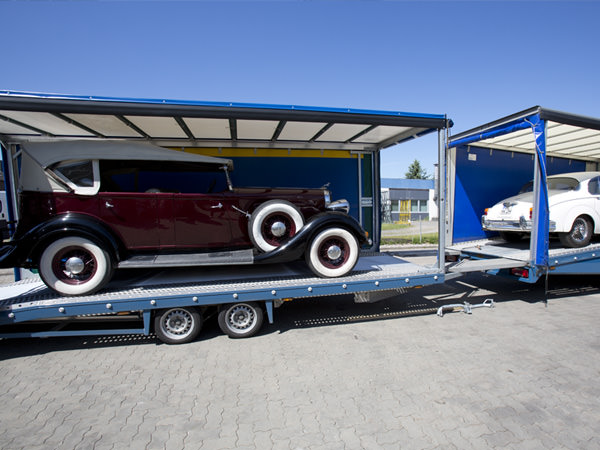Transporting classic cars requires special care and planning to protect these valuable pieces of automotive history Transport Vintage Vehicles.
The following article provides an in-depth overview of steps that can be taken to safely transport vintage vehicles from one location to another.
Proper Preparation is Key
Before transporting a classic car, it is important to thoroughly inspect the vehicle and ensure that any mechanical issues are addressed. Tires should be in good condition without dry rot or bald spots.
All fluid levels like oil, brake fluid, power steering fluid, etc. should be checked and topped off if needed. Suspension components and wheel bearings should be examined for signs of wear. Addressing potential problems upfront reduces the risk of breakdowns during the journey.
Choose the Right Hauling Method
For transporting vintage vehicles, open-air transport is generally not recommended due exposure to elements that could damage paint, upholstery or other interior components. Three good options for safely transporting classic cars include:
| Enclosed Trailer | A dedicated enclosed car trailer provides a fully protected environment similar to being inside a garage. This is usually the best choice for long distance transport. |
| OpenTransport Carrier | Specialized auto carriers can haul multiple vehicles on an open cargo area. More affordable but less protection. |
| Car Transport Dolly | A transport dolly allows driving the vehicle onto a platform for relocation over shorter distances. Protective covers help shield the car during transit. |
Properly Prepare the Vehicle for Transit – Transport Vintage Vehicles
Prior to loading into the transport carrier, trailer or onto a dolly, the classic car should be prepared for transit with the following steps:
- Inflate tires to the correct air pressure and install wheel chocks inside wheels to prevent rolling.
- Apply protective covers to prevent scratches or dirt from accumulating on painted surfaces during travel.
- Secure or remove loose articles from inside the vehicle that could shift or break during transport.
- Protect upholstery, carpets and interior trim with canvas, felt or other materials.
- Apply masking or duct tape to the front and rear of the vehicle to identify mileage, ownership and transport direction.
Safely Load and Secure the Vehicle
It is important to have enough hands available to carefully guide the classic car onto the hauling platform. Move slowly to avoid abrupt movements that could damage paint, trim or undercarriage components. Once in place, engage the parking brake and chock the wheels. Straps or tie-downs should then be threaded underneath and attached securely to the vehicle’s chassis in several locations such as the front splitter, rear bumper and wheel wells.
Webbing straps work better than chains for vintage vehicles to protect delicate surfaces. Cargo should be evenly distributed for balance and stability. Allow enough clearance between vehicles so each has room to withstand minor jostling. Before transit, double check that all anchor points are snug but not overtightened to avoid paint damage or other issues during travel.
Monitor the Vehicle During Transport – Transport Vintage Vehicles
When possible, periodically checking on the classic car during long distance transport is a good idea. Make brief rest stops to glance inside the carrier, listen for noises or vibrations, and ensure straps remain tight. Noting mileage or time allows pinpointing any potential issues to the hauler for prompt resolution. Upon arrival, unload the vehicle as smoothly as loading and inspect for signs of shipping damage before accepting delivery of the cherished collector car.
With the proper precautions, vintage vehicles can be transported safely between locations while reducing stress on their mechanical components and painted surfaces. Following these best practices helps protect irreplaceable pieces of motoring history so they can be enjoyed for generations to come.

